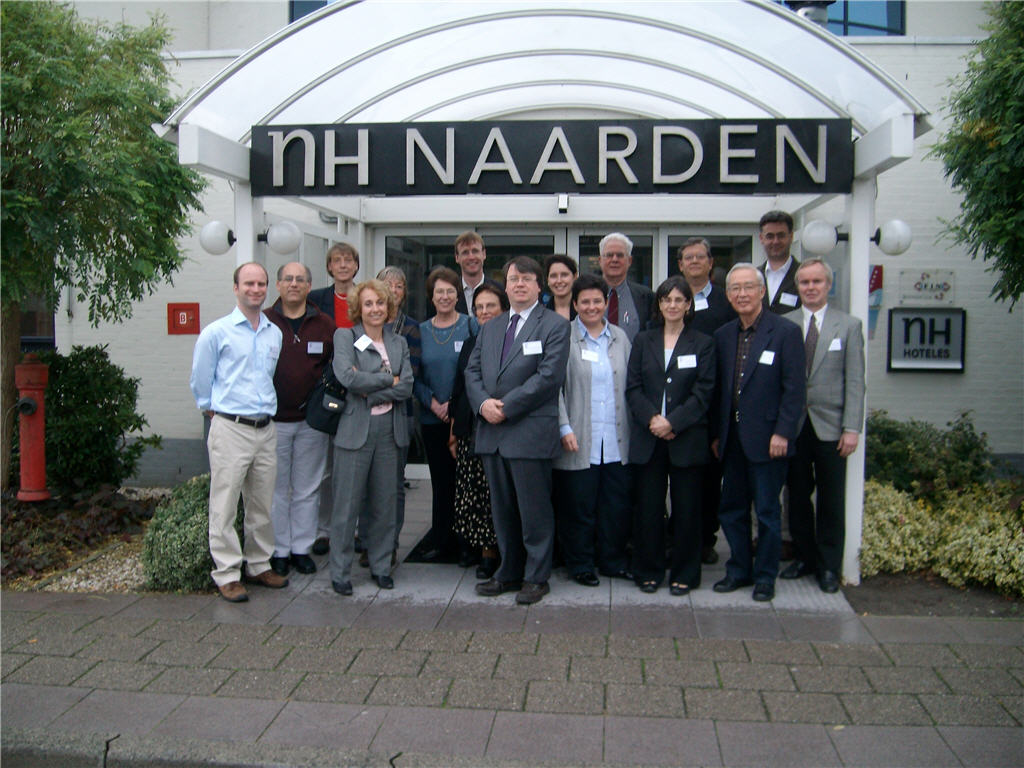Rare Structural Congenital Myopathies
- Number 169
- Date 9 November 2009
Seventeen clinicians and scientists from six European countries, Argentina, Japan, and the USA recently assembled for the 169thENMC-sponsored International Workshop on “Rare Structural Congenital Myopathies” in Naarden, The Netherlands. The aim of the workshop was to identify sufficient informative families and muscle tissue specimens in this group of neuromuscular conditions to analyse their genetic causation either by linkage analysis (a technique to trace a genetic condition within families) in informative families or by morphological studies on muscle tissues, including laser capture microdissection (a microscopic technique to directly isolate the abnormal structures from affected muscle) analysis to lay the foundation for future therapeutic approaches.
Background:
Among the congenital myopathies, there are more frequent and classical ones, such as nemaline myopathies, core diseases, and centronuclear myopathies for which dedicated workshops have already taken place at ENMC and consortia are in existence. However, there still are other, so called “rare structured congenital myopathies”, which so far had only been addressed once before, at the 56th ENMC International Workshop in 1997. With the tremendous progress in new gene identification in the congenital myopathies and with the development of novel microscopic, genetic and biochemical technologies and with the establishment of dedicated European and worldwide research networks, such “rare structured congential myopathies” have now come into focus again. Amongst those myopathies, the 169th ENMC International Workshop focused on tubular aggregate myopathy, cylindrical spirals myopathy, Zebra body myopathy, fingerprint body myopathy, and crystalline body myopathy.
Workshop contents:
Because these congenital myopathies are very rare individually, the recruitment of a informative families and/or muscle tissue specimens is critical to proceed towards their molecular analysis. The workshop achieved this goal by assembling clinicians and scientists from several major international neuromuscular institutions, not only from Europe but also from the USA, South America, and Japan who had reviewed their extensive archives to locate cases, informative families, and muscle tissue specimens.
Conclusion:
Having reviewed worldwide data on these rare myopathies, a consortium has been formed to move forward towards a comprehensive analysis of patients, families and muscle tissue, applying specialized techniques such as the use of antibodies (immunohistochemistry), laser capture microdissection analysis, and advanced gene analysis technology.
Only when genes and mutations will have been identified in these afore-mentioned “rare structural congenital myopathies”, a meaningful therapeutic approach can be conceived and hopefully brought back to the patients.
A detailed report on this workshop is published in Neuromuscular Disorders (pdf).
Participants:
Boersen, A. (ENMC)
Bönnemann C.G. (Philadelphia/USA)
Bertini, E. (Rome/Italy)
Claeys, K. (Paris/France)
Figarella-Branger, D. (Marseille/France)
Goebel, H.H. (Mainz/Germany)
Holton, J. (London/UK)
Hübner, A. (Dresden/Germany)
Kirschner, J. (Freiburg/Germany)
Lammens, M. (Nijmegen/The Netherlands)
Moore, S. (Iowa City/USA)
Nonaka, I. (Tokyo/Japan)
Olivé, M. (Barcelona/Spain)
Pegoraro, E. (Padova/Italy)
Polvikoski, T. (Newcastle/UK)
Schessl, J. (Munich/Germany)
Sewry, C. (London/U.K.)
Taratuto, A. (Buenos Aires/Argentina)
Clarke, N. (Sydney/Australia) submitted data to be presented at the workshop.

